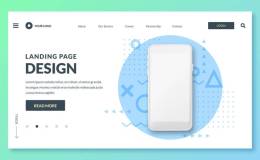Micro-interactions have become increasingly important in a world with a dizzying amount of digital platforms, and an ocean of content. While it used to be thought of as a cool feature in the early days of digital design, in the hyper-competitive digital space of today, it’s become a crucial element to the overall user experience. Optimize micro-interactions to enhance your UX design.
Using the sense of value users perceive from these micro-interactions, they boost engagement, and inspire positive feelings towards your brand, and ultimately, influence users’ actions. This article will discuss the basics of micro-interactions and how you can utilize it to enhance your UX design. Will the future of web designs be artificial intelligence?
What are micro-interactions?
In digital design, micro-interactions are found in most user engagements with products. It occurs when you hover your mouse over text and it changes color to indicate it can be clicked. It’s when animation comes out showing the progress of your upload. It’s even the message that pops up to let you know you’ve input the wrong password.
These little visual cues and other subtle indicators are micro-interactions. And while it may not be readily be noticed by users, that’s actually, often, when they’re properly executed. Micro-interactions, however subtle they may be, hold the general design scheme together – providing bits of information that allow users to navigate the interface and perform basic functions.
How it works
Micro-interactions have four basic elements: trigger, rules, feedback, and loops/modes. These elements help organize the operational cycle of these design elements.
Triggers
These are what initiate the micro-interaction process—a tap of a button, or a click of a mouse, for example. It can also be initiated by the system when certain qualifications are met, like when you get sound notifications when you receive a message.
As noted by Visual Hierarchy, these triggers work with a set of established action rules that prescribe what can and can’t be done.
Rules
These basically determine what happens once a micro-interaction is triggered. So when you swipe up on Tinder, for example, the rules state that you’ve “Super-liked” someone. But the rules also state that still can’t message them until they’ve liked you back.
Feedback
As the name implies, it lets users know what’s going on. Anything a user sees hears, or even feels when a micro-interaction is happening is feedback. For example, if you set your phone to vibrate, that short vibration indicating your choice of that setting is feedback.
Loops/Modes
These basically define the nature of the interaction—does it flash once, repeat? What happens over time? For example, the loops can be the number of times a user can input the wrong password, while the mode would be that an account would be temporarily blocked after five password errors.
Here are 9 Examples of when and how to use micro-interactions
Page animation
When you talk about page animation, it could be the creative transition between pages as seen in the example above or just a cool scrolling progress icon in the example below. These types of micro-interactions can give users better insight into the relationship between previous and current pages. It also makes even the process of skimming more engaging.
Swiping
Similarly, you can also take advantage of how innate swiping has become by incorporating smooth transitions to your content when users swipe. This way, you can add some entertainment value to your content, without users needing to get on a dating app.
Animated input fields
You probably haven’t met anyone that enjoys filling up forms. But animating fields can at least make the mundane task more engaging, and in the example below, even helpful.
Status animation
Similarly, in this age of dwindling attention spans and on-demand entertainment, nobody likes to wait. But by using animations for things like download/upload status, you can show users’ progress, while adding more fun to an otherwise boring function.
You can even use it to add to your branding, as you can see with the example below, where the brewery gives a glimpse of their production process with their loading animation.
Notifications
When it comes to notifications, it would be better if you can give users options. For example, there are users who prefer less intrusive notifications like in the example above. Others, meanwhile, wouldn’t mind Facebook Messenger’s chat bubble popping up even while they’re watching a YouTube video.
Facebook and Instagram have taken this to another level, providing users with a hit of dopamine every time someone likes their posts. This builds habits, making users look forward to getting notifications.
Pull-down menu
It’s become a staple design in smartphones’ operating systems, and it’s because it’s incredibly user-friendly. Just by pulling down from the top of your screen, you get access to all your notifications and your basic settings. Ease of navigation is one of the most important functions of micro-interactions, and pull-down menus enable you to do just that.
Call-to-action buttons
Your CTAs are there for a reason – and that’s because you want users to click on them. Adding animation to your CTA buttons can help stimulate users’ behavior. And at the very least, make them curious about what might happen.
Anchor text animation
Animating anchor texts is a great way to incorporate creative branding into simple functions like going back to your homepage or even just indicating that something can be clicked.
Tutorials
Micro-interactions are also a great way to educate users about how to use your product. Simple animations or even graphics that point out basic functions can go a long way towards better UX by making your product easy to use, and unveiling cool hidden functions.
Takeaway
These small details all add value to the overall experience of your users. A small feature like a non-intrusive notification or a cool status animation can make users feel that the company cares about them, and leads to feelings of goodwill towards the brand. And once that sort of relationship is built, you can then influence their actions to align with your own goals.
With everything going digital, it’s getting harder and harder to stand out from the crowd – but these subtle micro-interactions can help you achieve just that. Now, think about your most memorable micro-intractions you’ve encountered.






















